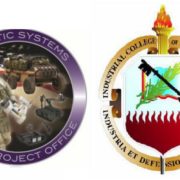This is the third in a series of articles, which predict what will not happen in 2013. This article focuses on why the future may not occur this year, and how it will affect Defense spending.
I am not now, nor have I ever been, a Mayan
Just to be clear, when I say 2013 will not be the year that the future finally arrives, I am not predicting some kind of apocalypse. In this context, I am talking about attributes we commonly associate with the future, such as innovation, progress, and improvements in technology as well as the standard of living.
In some ways this assertion is strongly counter-intuitive. After all, you may be reading this article on a handheld electronic device that received it at the speed of light over a wireless data system. Besides, didn’t you see that net-enabled fork at the Consumer Electronic Show? How can we say the future isn’t happening?
Nevertheless, there are a surprisingly large number of experts who are questioning our traditional assumptions of progress.













